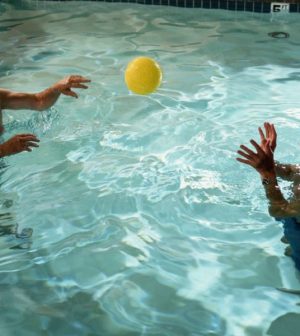- Navigating Your Midlife Crisis: Embracing New Possibilities
- City Raccoons Showing Signs of Domestication
- Mapping the Exposome: Science Broadens Focus to Environmental Disease Triggers
- One Week Less on Social Media Linked to Better Mental Health
- Your Brain Changes in Stages as You Age, Study Finds
- Some Suicide Victims Show No Typical Warning Signs, Study Finds
- ByHeart Formula Faces Lawsuits After Babies Sickened With Botulism
- Switch to Vegan Diet Could Cut Your Greenhouse Gas Emissions in Half
- Regular Bedtime Does Wonders for Blood Pressure
- Dining Alone Could Mean Worse Nutrition for Seniors
Tailoring Exercise to Your Age

Exercise is a great way to stay youthful and even turn back the clock on aging. If you’re new to exercise or simply want a fitness reboot, here are ideas by the decade.
In Your 20s: Experiment with different workouts to find what you enjoy. Make exercise a regular habit that you won’t want to give up, even when career and family make heavy demands on you.
In Your 30s: Short on time? Try three 15-minute walks spread throughout the day. To stay fit and retain muscle, do cardio just about every day and strength training two or three times a week. If you’re new to exercise, take classes or have a personal trainer create a program for you.
In Your 40s: Enhance your weekly routine by doing both low-intensity exercise, like yoga for stress relief and flexibility, and high-intensity workouts, like interval training or a spin or kettlebell class, to boost calorie burn and muscle elasticity. Expect longer recovery times after high-intensity workouts, so make sure to get enough sleep.
In Your 50s: Regular exercise remains a must, but ask your doctor for modifications if you have any chronic conditions. Varying your workouts or taking up a new sport will engage your brain as well as different muscles. Get in at least one or two high-intensity workouts a week and try to take active vacations that include favorite pastimes like biking, hiking or even walking tours.
In Your 60s and Beyond: Stay fit and strong to stay independent longer, and stay socially engaged by taking group classes. Stick with strength training, but consider using machines rather than free weights for more control. Water workouts may be easier on joints, too, especially if you have arthritis. But always keep moving. Try tai chi for flexibility and balance, and go dancing for fun and fitness.
More information
The American Council on Exercise has more, including nutrition and sleep requirements by decade.
Source: HealthDay
Copyright © 2025 HealthDay. All rights reserved.










